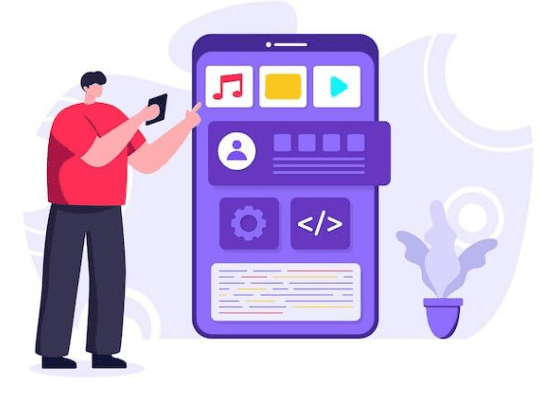Effective Strategies for Testing Your Flutter Apps

Flutter, an open-source UI toolkit developed by Google, is perhaps the most popular mobile app development platforms out there. In fact, about 46% of the software developers were using the Flutter framework in 2022. Flutter enables developers to create native apps for iOS and Android using a single codebase.
However, even though the Flutter framework simplifies the process of building cross-platform native applications, Flutter testing remains a significant challenge for developers.
Why Is It Important to Test Flutter Apps?

Flutter apps are known for their high performance and attractive user interfaces. However, even the best of apps can falter. Hence, they require thorough testing. The following benefits more profoundly reflect upon the importance of testing Flutter apps:
Better Quality
Testing can help to identify and fix bugs in Flutter apps before they are released to users. This can help improve the app's quality and reduce the complaints from end users.
More Reliability
Testing can help ensure that Flutter apps are reliable and crash-free. Although Flutter supports cross-functionality by design and pursues null safety to reduce errors and curb app crashes, testing ensures that Flutter apps can perform reliably in mission-critical or high-stakes environments.
Better Performance
Performance is everything when we're talking about mobile apps. Testing helps identify performance bottlenecks in Flutter apps and allows for improving the user experience and making the app more responsive.
Reduction in Development Time
By identifying and fixing bugs early in the development process, testing can reduce the time spent debugging and fixing errors later. As a result of this, developers can focus on new features and improvements.
Your business guide to codeless test automation
Ready to execute continuous test automation without writing a single code?

5 Effective Strategies for Testing Your Flutter Apps
Back in 2020, Google revealed that almost 500,000 developers were using Flutter every month. In fact, the adoption of Flutter had extended to nearly 2 million developers since its inception, with version 1.0 in December 2018.
For sure, Flutter is the way to go for a host of developers. But this makes it even more critical for them to be well-versed with Flutter testing strategies. Here's a rundown of the five effective strategies that they must pursue:
1. Be Well-Versed with Flutter Testing Levels
By understanding the different levels of Flutter testing, developers can tailor their testing strategies to distinct aspects of the app's architecture and functionality. This way, they can maintain the apps' quality and prepare them for production.
Unit Tests
The first line of defense, unit tests, help scrutinize the functionality of individual code units or components. Flutter's test package supports the writing of unit tests.
Widget Tests
Widget tests take unit tests a step further by examining the behavior and interaction of UI elements. In essence, these tests ensure that widgets respond accurately to user actions. They also ensure that widgets are displayed correctly on different screen sizes and devices.
Integration Tests
Integration tests are the broadest in scope and ensure the harmonious functioning of various components and modules across the entire app. These tests can help identify bugs that surface when different parts of the app interact with each other.
2. Ensure That You Write Relevant Test Cases
The efficacy of your testing endeavors hinges upon creating pertinent testing scenarios. To that end, crafting testing cases that emulate real-world user interactions and app behavior makes a lot of sense. Each test case should encapsulate a unique user flow, encompassing diverse paths and functionalities within the app.
By meticulously crafting such relevant test cases, developers can uncover potential vulnerabilities, identify bugs, and validate the app's reliability and stability. At the end of the day, the overarching test scenarios should encompass not only typical usage patterns but also edge cases, ensuring that the app remains resilient even in unusual situations.
3. Aim for Maximum Test Coverage
Consistently reinforcing a maximum coverage goal will ensure that developers continuously write and modify test cases that adhere to the app's current state. After all, the testing efforts must cover all of an app's functionality. For that reason, developers must follow these steps to ensure maximum test coverage:
- Create tests for all code paths
- Ensure to test across different levels (as discussed above)
- Automate testing as much as possible
4. Automate Flutter Testing
Automated testing tools can empower developers to streamline the testing and lessen the cognitive load associated with manual efforts.
For example, a test automation tool can help write integration tests that interact with a running app on an actual device or emulator. Also, such a tool can write unit tests for testing widgets.
In sum, using such tools, you can automate repetitive and time-consuming testing tasks, such as navigating through the app's various screens, filling out forms, and verifying expected results.
5. Strategically Implement Manual Testing
Automated testing is a powerful tool. However, it is not always the best solution for every situation. Some behaviors and integrations are better tested with manual testing. For example, manual testing is often necessary for testing the edge cases in situations not covered by the automated test suite.
Manual testing can also help test the integration of a Flutter app with other systems, such as databases, APIs, and third-party services. By strategically implementing manual testing, developers can unearth and fix bugs that automated testing didn't catch.
Here are some tips for strategically implementing manual testing on Flutter apps:
- Focus on the most important features: Not all features of a Flutter app are created equal. Some features are more important than others and should be given more attention during manual testing.
- Test edge cases: As mentioned earlier, edge cases are often the source of bugs. So, make sure to test edge cases thoroughly during manual testing.
- Test the user experience: The user experience of a Flutter app is vital for user satisfaction. Therefore, make sure to evaluate it thoroughly.
- Test integrations: Integrations with other systems are often complex and challenging to test. Manual testing can prove immensely viable here.
How To Test Flutter Applications? (Manual vs. Automated)

Developers can test their Flutter applications manually as well as via a comprehensive Flutter test automation platform. Here's an overview of what both approaches look like:
Manually Testing a Flutter App
When testing Flutter apps manually, developers need to follow these steps:
- Start off by identifying the features that you want to test
- Create a test plan – a roadmap for how and what you’ll test
- Install the app on the target device. You can also test it on an emulator.
- Start using the app like a user to develop a nuanced understanding of the UI elements.
- Carry out functional testing, i.e., checking navigation flows, core functionality, etc.
- Test responsiveness on different screens as part of UX testing.
- Check for compatibility across different OS versions and devices.
- Document accessibility concerns, if any.
- Evaluate the overall app behavior and if it aligns with what was expected out of the concerned app.
- Involve end-users in the process to get a comprehensive understanding of the issues.
- Document all the issues discovered and relay them to the concerned development team for rectification.
Manual testing efforts also cover everything nook and corner of a concrete testing strategy. However, given the time constraints and the room for errors seeping in, it's viable to go for a combination of manual and automated testing.
Work on BIG ideas, without big work.
Simplify test automation with our Unified platform for Enterprise stack across Web, Mobile, API, Desktop & Backend

Flutter Testing Using Automation: The Case for ACCELQ's Codeless Test Automation
Automated testing is a critical part of the Flutter app development process. By automating unit, widget, and integration testing, developers can improve the quality and reliability of their apps. ACCELQ's codeless test automation platform makes it easy to automate Flutter apps. With ACCELQ, you can create and execute automated tests without writing any code. This can save you time and effort and help you ensure that your Flutter apps are of the highest quality.
ACCELQ also supports various other testing needs, including UI testing, performance testing, and security testing. This means you can use ACCELQ to test your Flutter apps end-to-end, ensuring they are ready for production.
Sign up for a free trial today and see how ACCELQ can help you improve the quality and reliability of your Flutter apps via Flutter test automation.
Geosley Andrades
Director, Product Evangelist at ACCELQ
Geosley is a Test Automation Evangelist and Community builder at ACCELQ. Being passionate about continuous learning, Geosley helps ACCELQ with innovative solutions to transform test automation to be simpler, more reliable, and sustainable for the real world.
Discover More
 Should We Prioritize Testing for Compliance – or Quality?
Should We Prioritize Testing for Compliance – or Quality?
Should We Prioritize Testing for Compliance – or Quality?
 What Is Chaos Engineering? Principles, Best Practices, Advantages
What Is Chaos Engineering? Principles, Best Practices, Advantages
































